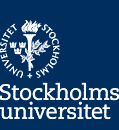DEL 1. av kortkursen The Use of Paradata in Surveys med Frauke Kreuter
DEL 2. av kortkursen The Use of Paradata in Surveys med Frauke Kreuter
About the Instructor

Frauke Kreuter is an associate professor in the Joint Program in Survey Methodology (JPSM) at the University of Maryland, College Park, MD, USA; Director of the Statistical Methods research department (KEM) at the Institute for Employment Research (IAB) in Nürnberg, Germany; and Professor of Statistics at Ludwig-Maximilians-Universität in Munich, Germany. She has published extensively on the use of paradata for nonresponse adjustment. Her current research interests focus on measurement error and nonresponse in social surveys, and the use of paradata in managing and improving survey data collection. In her work at JPSM she maintains strong ties to the Federal Statistical System.
Course Objectives
During the last twenty years survey data have been increasingly collected through computer assisted modes. As a result, a new class of data * called paradata * is now available to survey methodologists. Typical examples are key-stroke files, capturing the navigations through the questionnaire, and time stamps, providing information such as date and time of each call attempt or the length of a question-answer sequence. Other examples are interviewer observations about a sampled household or neighborhood, recordings of vocal properties of the interviewer and respondent, information about interviewers and interviewing strategies. While the type of available paradata varies by mode, all share one feature * they are a by-product of the data collection process capturing information about that process.
The course will give an introduction to what are survey paradata, how paradata can be collected and analyzed, and provide examples of paradata use to monitor fieldwork activity, guide intervention decisions during data collection, and anticipate survey data quality and cost outcomes. Case-studies will draw from both social and economic surveys. The objective is to provide the participants with an overview of best practices as well as cutting edge research on the use of paradata and to help participants gain a thorough understanding of the role of paradata in increasing survey quality



